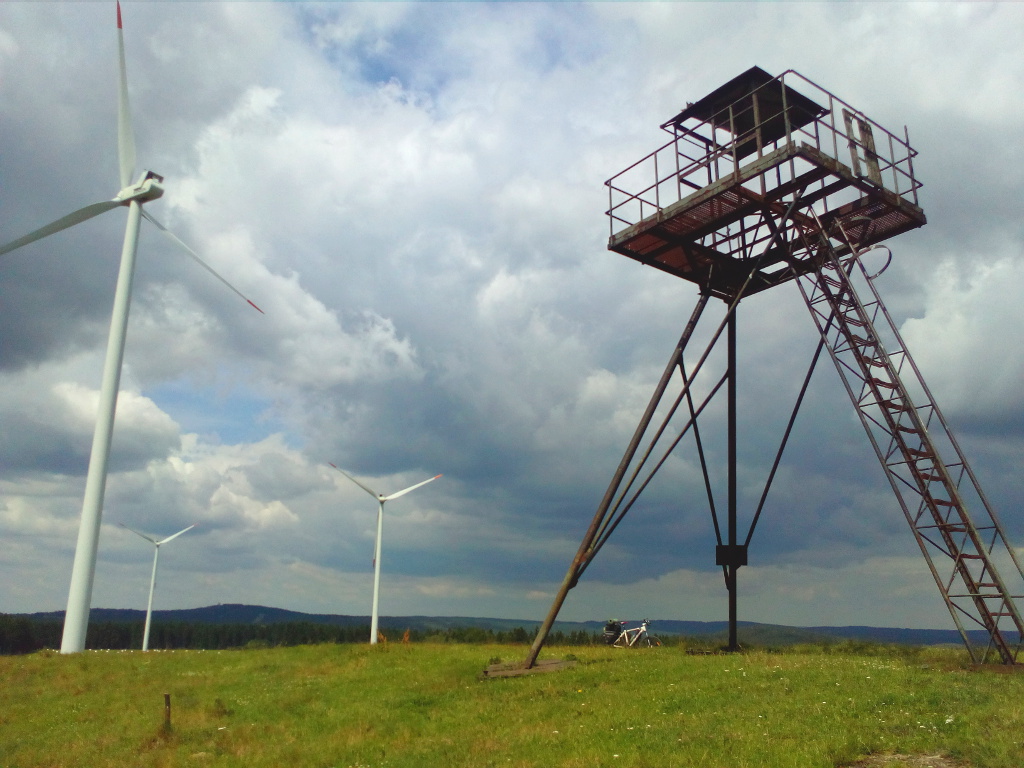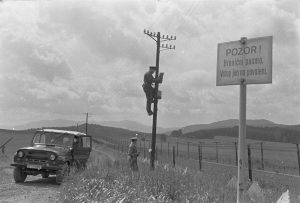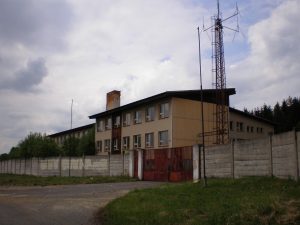| Lokalita | Aš |
| Typ | Demilitarizované pásmo/architektura a krajina |
| Místo nálezu | 50.2238827, 12.1950127 |

Součástí projektu KREAS
| Lokalita | Aš |
| Typ | Demilitarizované pásmo/architektura a krajina |
| Místo nálezu | 50.2238827, 12.1950127 |

Aš region is historically the very western part of Czech Lands. Although a geographical periphery, it has been a wealth and economically developed region – the mining works of ore were nearby and it was a trade centre and a crossroads to both Bavaria and Saxony. Contrary, the massive re-settlement and the economic revitalization of textile industry was the biggest issue of Aš region shortly after WW2.
In 1950, the whole region was declared a Czechoslovak borderland zone, divided into two zones according to the level of security measures. The borderline itself and the closest zone approx. 2 km deep inland was called the forbidden zone, determined to be totally depopulated, all citizens were expelled inlands and all the buildings and constructions were completely demolished there (it was about 25 villages, settlements, solitary farms and mills; some of them already deserted, but were also some villages with hundreds of inhabitants living there). The rest of the region’s area was under the so-called “boundary-zone regime”, which meant that the life was strictly controlled there (non-settled persons needed special permissions to visit the region; persons couldn’t walk off the roads beyond the urban zone; farmers and hunters needed to be accompanied by armed guards in the terrain, in the fields).
Iron Curtain in Aš region consisted of consisted of three rows of barbed-wire fence stretched on wooden pales. The wires were buzzing with the electricity of lethal power, therefore many small transformer stations were built and connected to the local electricity (ironically, as many locals still remember, that contributed very well to the definite electrification of the urban area of Aš). To enable quick intervention of guarding jeeps, wide and direct forest clearings were also made nearby the Curtain and the asphalt roads were laid there. Especially in Aš zone, even the mine fields were placed there, but they were soon, in mid-50s, removed because of too much accidents occurred during its maintenance. Fence line was accompanied by the lanes of plowed soil and sand and sprayed with herbicides, which badly supported further erosion of the intersected terrain. A lot of tall watchtowers as well as many masked observation bunkers were installed in the zone. Steel-constructed stations of automatized sirens, spotlights and signal flare-guns were set on place as well as concrete dragon-teeth and steel hedgehogs. Next to this fenced forbidden zone, in previously mentioned Boundary Zone, there were built in total 6 Border Guards Bases, huge military compounds with central courtyard and surrounding buildings of quarters and catering, storages, garages, communications and headquarters offices, infirmaries and so on, each base occupied by more than 2 hundred of men.
The Iron Curtain in Aš as well as in Czechoslovakia ceased to exist exactly one month after the Velvet Revolution, on the 17th December 1989. The barb-wired walls were cut, the poles, the barriers, the watchtowers were torn down soon, but much remained till today.





